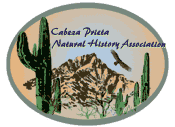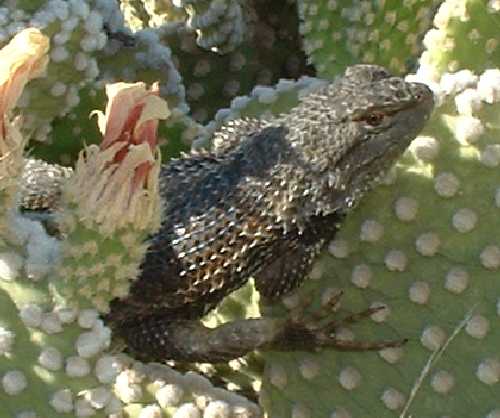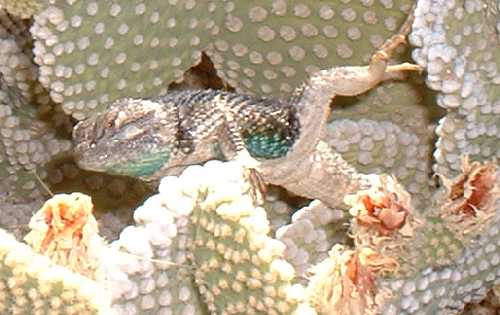
Cabeza Prieta Natural History Association
Sonoran Desert Reptiles
Sceloporus magister (Desert spiny lizard)



|
Diet: primarily insectivorous, occasionally eat other lizards and plant material
Size: 3" to 5½" from nose to vent (8 to 14 cm) |
Identification: 3 1/4 - 5 3/5 in. (8.2-14.2 cm). Stocky, usually light-colored, with large pointed scales and black wedge-shaped mark on each side of neck. Rear edge of neck markings whitish or pale yellow. Straw-colored, yellow, yellowish brown, or brown above, with crossbands or spots of dusky that usually fade with age. Sides often tinged with rust. Head sometimes orange, 5 - 7 pointed ear scales (auriculars). Supraorbital semicircles incomplete. Young: Usually many small blotches arranged in 4 lengthwise rows. Crossbands often conspicuous. Male: Dorsal markings vary. For sw Arizona, broad black to deep purple length-wise dorsal stripe Enlarged postanals and swollen tail base. Blue to bluish green patch on throat and on each side of belly. Belly patches edged with black and sometimes joined at midline. Female: Blue markings faint or absent. Head may be orange or reddish when breeding. Eats insects (including their larvae, ants, beetles, grasshoppers, termites, and caterpillars), spiders, centipedes, lizards, and occasionally buds, flowers, berries, and leaves.
References
|
Photo Credits:
Photo #1
Photo #2
Photo #3
Copyright Creative Commons
HTML & Programing by
Thomas R. Powell